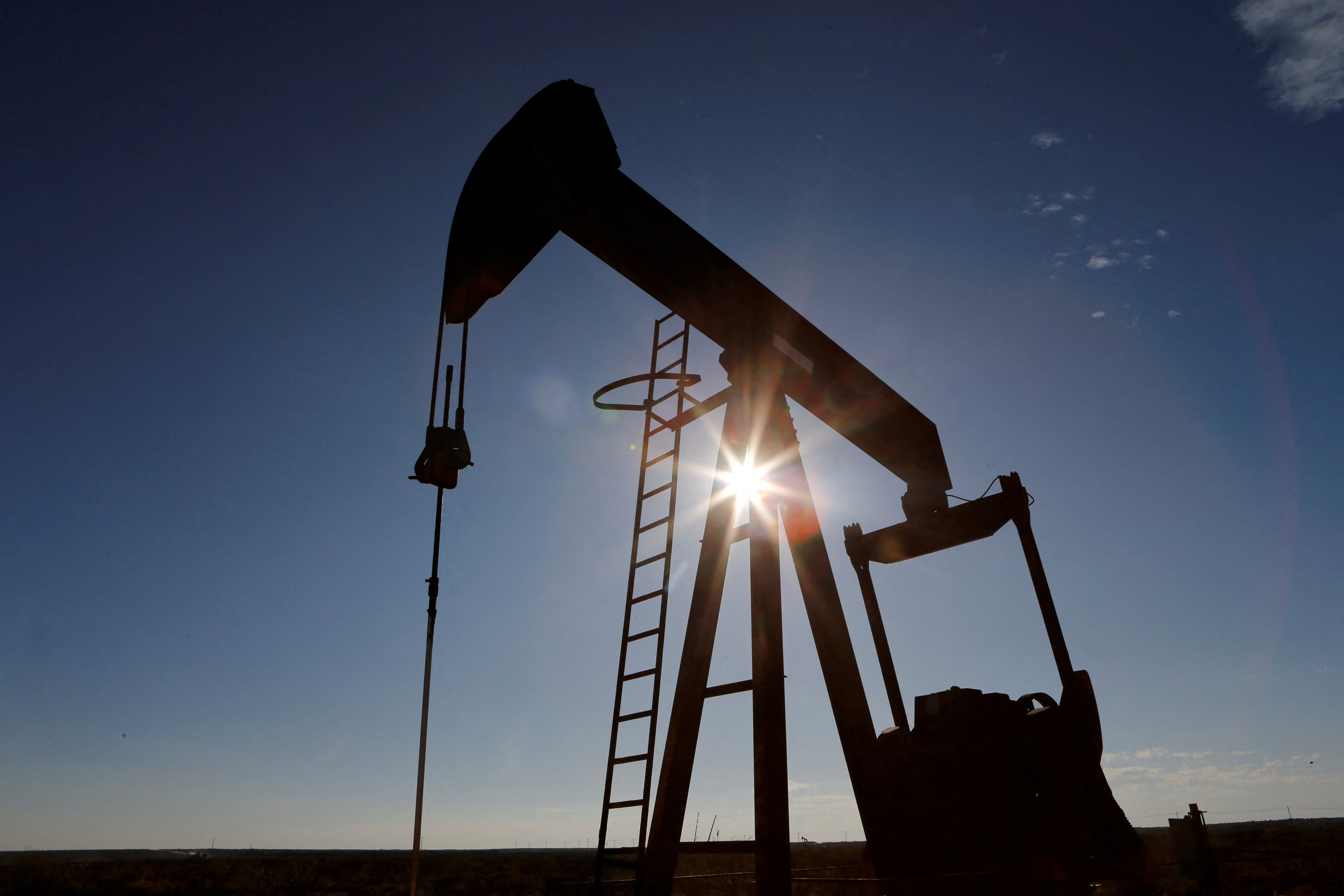
The sun behind a crude oil pump crane in the Permian Basin in Loving County, Texas, US, November 22, 2019. Photo taken November 22, 2019. Photograph: Angus Mordaunt, Reuters. Obtaining licensing rights
Nov 8 (Reuters) – Oil prices faced difficulties on Wednesday after falling to their lowest levels in more than three months in the previous session, affected by concerns about falling demand in the United States and China, the world’s largest oil consumers.
By 06:36 GMT, Brent crude futures rose 15 cents to $81.76 per barrel, while US crude futures fell two cents to $77.35 per barrel. Both fell to their lowest level since July 24 on Tuesday.
“The market is clearly less concerned about potential supply disruptions in the Middle East and is instead focused on easing the balance,” Warren Patterson and Ewa Manthey, analysts from ING Bank, said in a note to clients. Tight oil supply conditions.
Market sources said late on Tuesday, citing American Petroleum Institute figures, that US crude oil inventories rose by about 12 million barrels last week.
The US Energy Information Administration (EIA) will postpone the release of weekly inventory data until the week of November 13.
The Energy Information Administration said Tuesday that U.S. crude oil production this year will rise slightly less than previously expected while demand will decline.
The EIA now expects the country’s total oil consumption to decline by 300,000 barrels per day this year, reversing its previous forecast of an increase of 100,000 barrels per day.
The agency also expected Venezuela’s crude oil production to rise by less than 200,000 barrels per day to an average of 900,000 barrels per day by the end of 2024 in light of the easing of US sanctions.
Easing concerns about tight supplies, analysts from Goldman Sachs estimated that net seaborne oil exports by six OPEC countries, which have announced cumulative production cuts of 2 million barrels per day since April 2023, remain at 0.6 million barrels per day. Just below April levels.
Data in China, the world’s largest importer of crude oil, also raised doubts about the demand outlook.
The world’s second-largest economy’s imports of crude oil in October showed strong growth, but China’s total exports of goods and services contracted faster than expected, raising concerns about weak global demand.
Adding to the pressure on oil prices is the modest recovery in the US dollar (.DXY) from recent lows, making oil more expensive for holders of other currencies.
On the bright side, oil producer OPEC expects the global economy to grow and drive fuel demand, despite economic challenges, including high inflation and interest rates.
Meanwhile, China is expected to achieve its annual GDP growth target this year, the Chinese central bank governor said on Wednesday. Beijing has set an economic growth target of about 5% for this year.
(Reporting by Stephanie Kelly and Moyo Shaw Editing by Shri Navaratnam and Kim Coghill)
Our standards: Thomson Reuters Trust Principles.

“Beer aficionado. Gamer. Alcohol fanatic. Evil food trailblazer. Avid bacon maven.”
